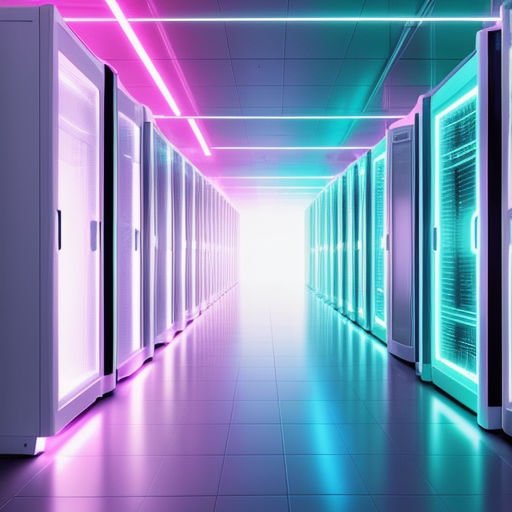Why Data Centers Are the Secret Powerhouses of the Digital Age
Unveiling the Backbone of Modern Connectivity
Every day, billions of people access websites, stream videos, send emails, and engage on social media platforms. But behind every click and tap, a powerful infrastructure keeps the digital world running seamlessly—data centers. These often underappreciated facilities play a crucial role far beyond just storing information. As the secret powerhouses of the digital age, data centers enable global communication, cloud computing, and endless online services that define modern life.
They serve as hubs for processing, managing, and distributing data at incredible speeds, ensuring everything from simple web browsing to complex artificial intelligence workloads operates smoothly. Understanding why data centers hold such a pivotal place in today’s technology ecosystem reveals much about the future of digital innovation and connectivity.
What Are Data Centers and Why Do They Matter?
The Core Functions of Data Centers
Data centers are specialized facilities designed to house computer systems and associated components such as telecommunications and storage systems. They provide a secure, controlled environment where servers operate around the clock, handling massive volumes of data.
Key roles of data centers include:
– Storing large datasets for companies and cloud providers
– Hosting websites, applications, and services accessible globally
– Supporting data processing tasks for various industries
– Enabling cloud computing, artificial intelligence, and big data analytics
– Facilitating disaster recovery and data backup
Without data centers, the internet as we know it would be fragmented, slow, and unreliable, drastically impacting businesses and consumers alike.
Data Centers and the Digital Economy
The digital economy depends heavily on fast, reliable data access. Data centers underpin everything from e-commerce platforms and financial transactions to social networks and streaming services. For example, Amazon Web Services, Microsoft Azure, and Google Cloud collectively operate vast networks of data centers that power countless applications worldwide.
According to a report from the Uptime Institute, data centers consume around 1% of the world’s electricity but support over $10 trillion in economic value. This reveals just how pivotal they are in enabling modern commerce and communication channels globally.
The Architecture Behind Data Centers
Physical Components and Layout
A data center’s architecture is thoughtfully designed for efficiency and resilience. Key components include:
– Servers: High-powered machines that handle computational loads
– Storage Devices: SSDs or HDDs to store vast amounts of data
– Networking Equipment: Routers, switches, and cabling connecting systems internally and externally
– Cooling Systems: Air and liquid cooling solutions to maintain optimal temperature
– Power Supply: Redundant sources including uninterruptible power supplies (UPS) and generators to keep operations uninterrupted
These components are arranged in a layout promoting scalability, security, and fault tolerance.
Data Center Tiers and Reliability
Data centers are classified into tiers (I through IV) based on uptime and redundancy measures. Tier IV, the highest level, offers nearly 100% uptime through multiple power and cooling paths, while Tier I might have limited redundancy.
The tier system ensures organizations can select facilities commensurate with their uptime and data security needs. For mission-critical services, Tier III and IV data centers are essential as downtime can cost millions or compromise user trust.
Energy Efficiency and Sustainability in Data Centers
The Environmental Impact Challenge
As data centers expand globally, their energy consumption has become a significant environmental concern. The massive electrical loads required to power servers and cooling systems contribute to carbon emissions.
Recent estimates suggest that data centers account for roughly 1-2% of global electricity use, a figure expected to grow unless efficiency measures improve.
Innovations Driving Greener Data Centers
To address sustainability challenges, industry leaders are adopting innovative approaches to reduce the environmental footprint of data centers:
– Utilizing renewable energy sources such as solar and wind to power facilities
– Implementing advanced cooling technologies like liquid cooling and free-air cooling to reduce energy use
– Designing energy-efficient server architectures and virtualization to optimize resource utilization
– Locating data centers in colder climates to leverage natural cooling
– Recycling waste heat produced by servers for other uses
Companies like Google and Microsoft are committing to carbon neutrality, showcasing how the data center industry can evolve responsibly.
Security and Disaster Recovery Focus
Protecting Data Integrity and Privacy
Data centers are custodian to vast amounts of sensitive information, making security paramount. Physical security measures include biometric access controls, surveillance cameras, and on-site personnel. Digitally, encryption, firewalls, and multi-factor authentication guard against cyber threats.
Regulatory compliance frameworks such as GDPR and HIPAA require stringent data protection protocols, and respected data centers implement these rigorously to ensure client trust.
Disaster Recovery and Business Continuity
Data centers are critical for business resilience. Through geographically distributed facilities, they provide backup options and failover systems to continue services during outages caused by natural disasters, power failures, or cyberattacks.
Disaster recovery plans often leverage multiple data centers in diverse locations, ensuring data replication and rapid restoration capabilities.
The Future of Data Centers: Trends to Watch
Edge and Distributed Data Centers
With the rise of Internet of Things (IoT), 5G connectivity, and latency-sensitive applications like autonomous vehicles and augmented reality, traditional centralized data centers face limits. Edge data centers – smaller facilities located closer to end-users – provide faster data processing and reduced latency.
This shift represents a hybrid model blending centralized and edge infrastructures, supporting emerging technologies more effectively.
Artificial Intelligence and Automation in Operations
AI-driven management tools help optimize data center efficiency by automating workload balancing, predictive maintenance, and energy use optimization. These developments reduce costs and improve reliability during scaling phases.
According to a report from MarketsandMarkets, AI in data centers is projected to grow annually by 27%, highlighting its transformative role.
Embracing the Power of Data Centers in Your Digital Strategy
Recognizing the pivotal role data centers play in the digital landscape is key for businesses and individuals alike. They are not just physical buildings filled with computers; they are the dynamic engines powering innovation, connectivity, and commerce worldwide.
Whether you’re a company planning infrastructure, or a consumer curious about what happens behind the scenes, appreciating data centers’ function helps understand the digital age’s scale and complexity.
For more insights on digital infrastructure and technology innovations, visit the Uptime Institute’s official resource center at [https://uptimeinstitute.com](https://uptimeinstitute.com).
Efficient utilization of data centers combined with forward-thinking approaches to sustainability and security will shape the digital future for decades to come.
Start exploring how your digital projects can leverage modern data center capabilities today and be part of the connected revolution powering tomorrow.














Post Comment